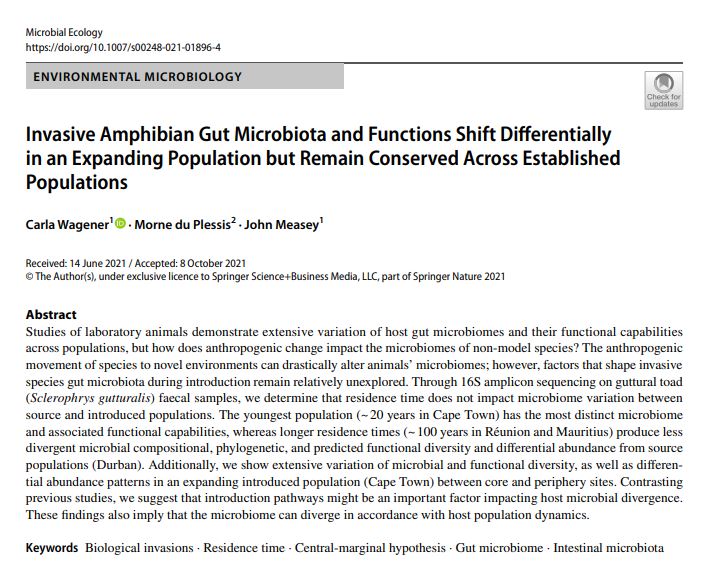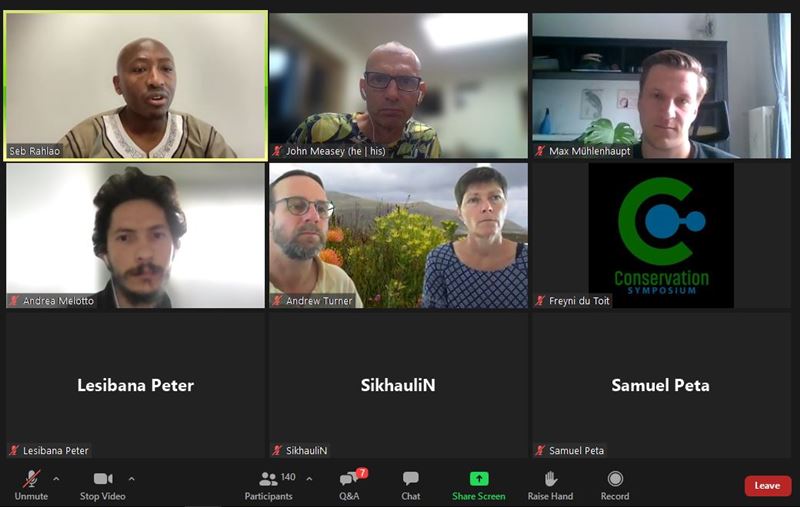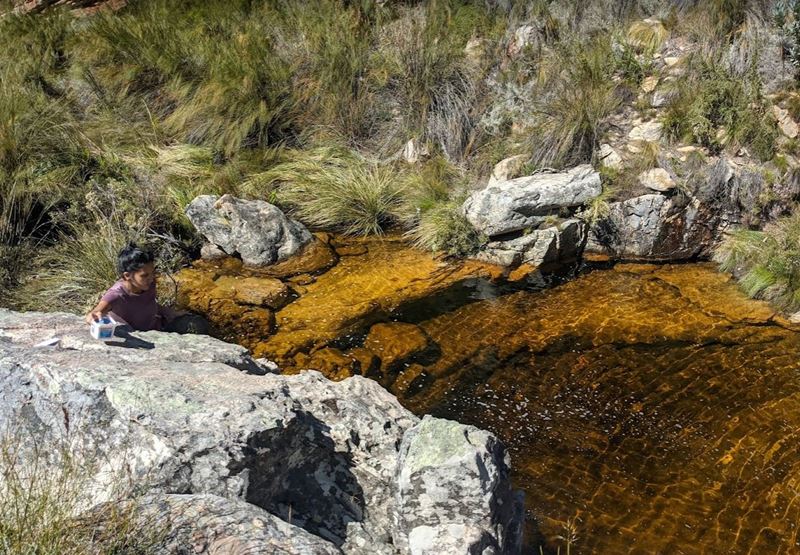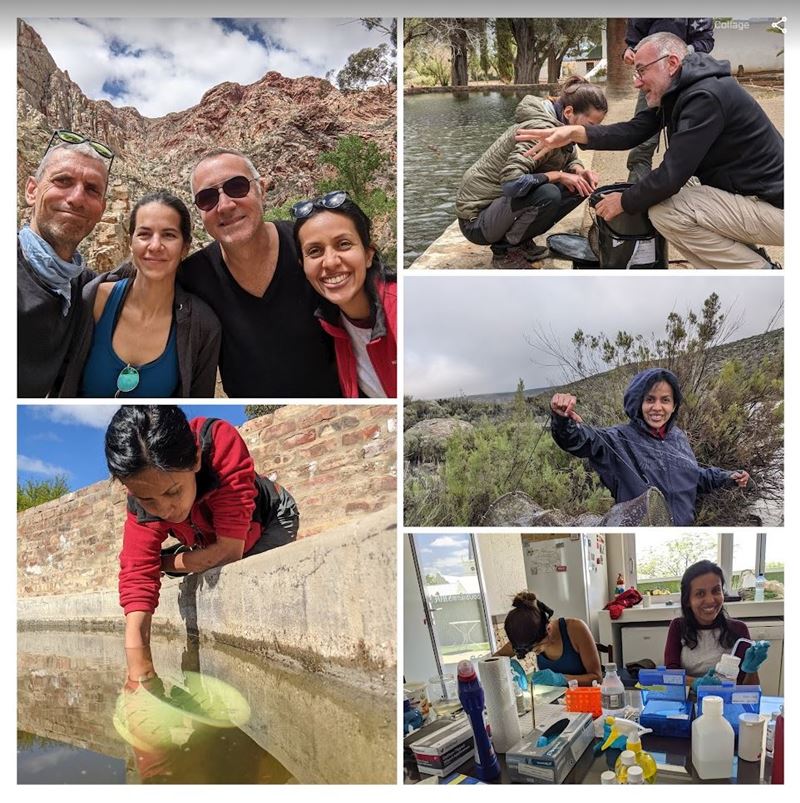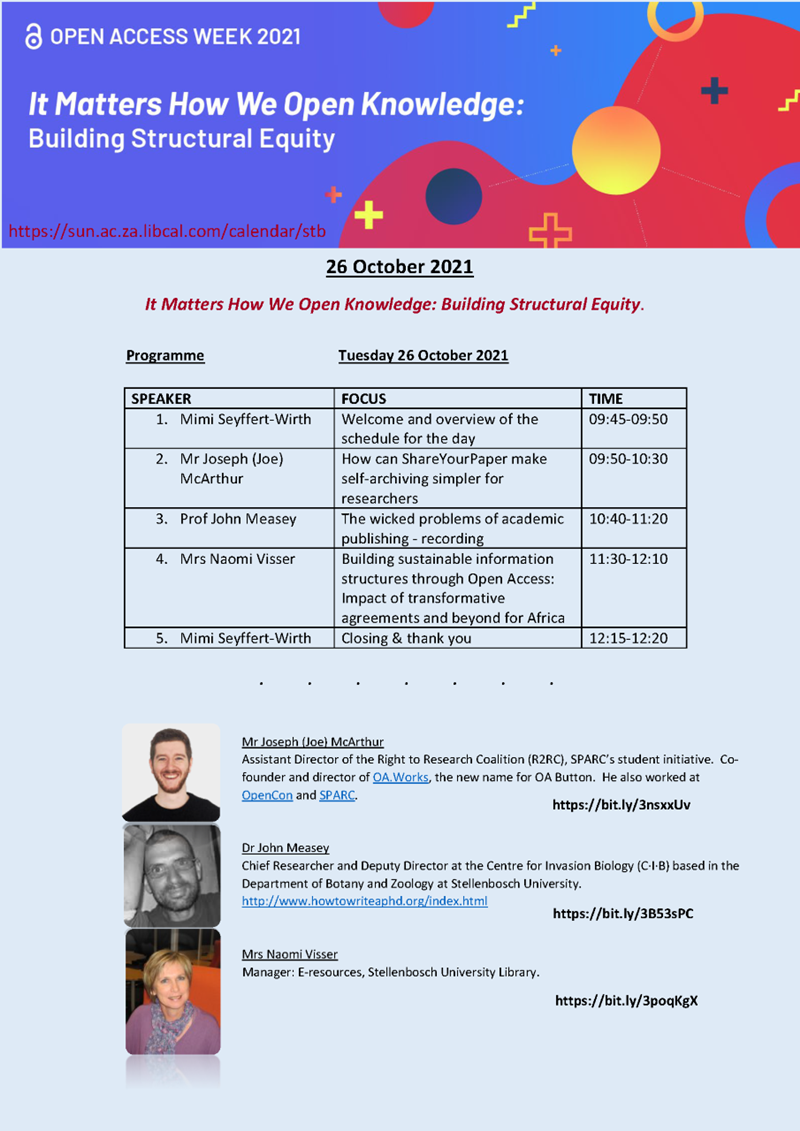Expanding populations of toads shit in the woods
A recent study by CIB MSc student, Carla Wagener, and CIB researcher John Measey, found that the gut microbiome on invasive toads shifts in expanding populations.
The study, published this month inMicrobial Ecology, examined the faecal microbiome of three invasive populations of the Guttural Toad,Sclerophrys gutturalis, Mauritius, Reunion and Cape Town, as well as their origin population in Durban. The Mauritius and Reunion populations, despite being introduced ~100 years ago, contained a microbiome that most closely resembled the native Durban population.
Guttural toads from Cape Town had the most distinct microbiome recorded for these toads. Although this population is only ~20 years old, the animals are believed to have arrived accidentally in Cape Town as eggs or tadpoles. This would mean that the gut microbiome of the adults was acquired after metamorphosis in their new environment. Moreover, toads collected from the periphery of the invasion were found to have a microbiome that had shifted from those at the invasion core.
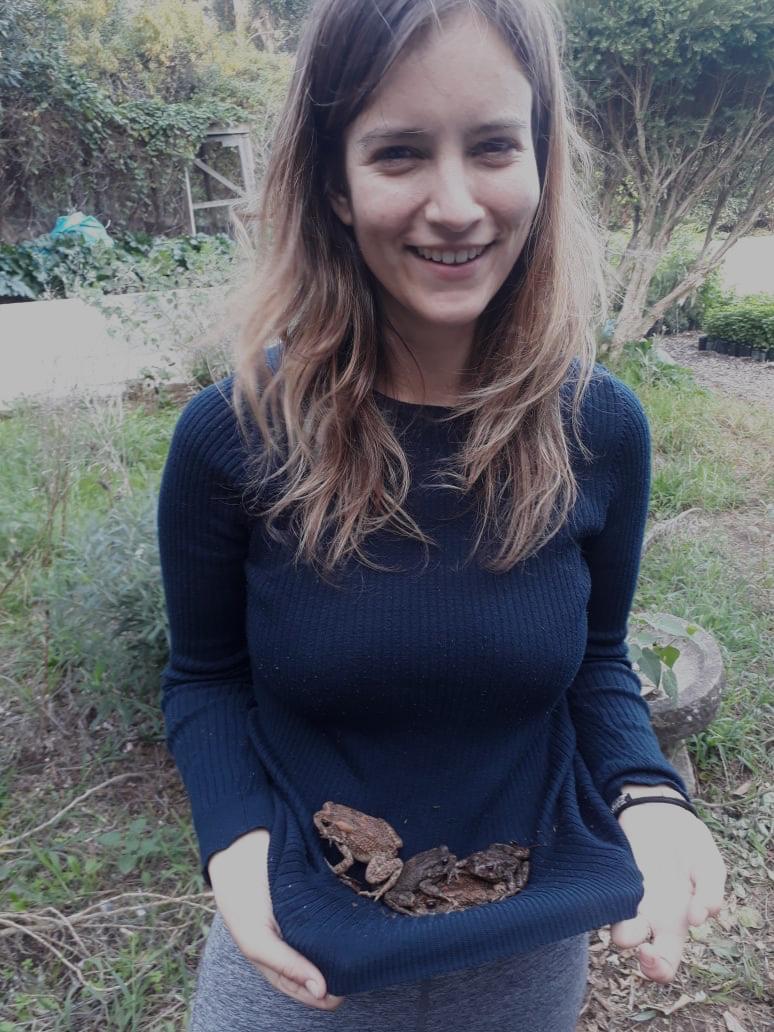
This is the first time that a study has shown rapid alteration of the faecal microbiome during a population expansion, such as that during the movement of individuals during an invasion. It seems likely that this difference is due to the proximity of other Guttural Toads during the expansion process.
Read the article here:
Wagener, C., du Plessis, M., Measey, J. (2021) Invasive amphibian gut microbiota and functions shift differentially in an expanding population but remain conserved across established populations.Microbial Ecologyhttps://doi.org/10.1007/s00248-021-01896-4
